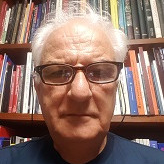Editorial Board Members' Collection Series on Quantum Entanglement
A special issue of Entropy (ISSN 1099-4300). This special issue belongs to the section "Quantum Information".
Deadline for manuscript submissions: 15 October 2024 | Viewed by 3603
Special Issue Editors
Interests: quantum information; quantum communication; quantum key distribution; quantum cryptography
Special Issues, Collections and Topics in MDPI journals
Interests: biostatistics; genetics; survival analysis; semiparametric models; causality; machine learning; statistical image analysis and quantum statistical information; foundational aspects of statistics, probability and quantum physics
Special Issues, Collections and Topics in MDPI journals
Interests: quantum information; cosmology
Interests: quantum feedback control; quantum stochastic dynamics; open quantum systems; quantum optics; nonlinear systems; nonlinear control
Interests: quantum dynamics; photon statistics; spectroscopy and control of single quantum systems; quantum dot scintillation dynamics; ultrafast dynamics of atomic and molecular systems
Special Issues, Collections and Topics in MDPI journals
Interests: quantum chemistry; quantum dynamics in condensed phases; nanoscale electronics; charge, energy, and information transfer; matter–radiation interaction
Special Issues, Collections and Topics in MDPI journals
Interests: quantum electrodynamics; open systems; time dependent spin Hamiltonians; quantum and semiclassical Rabi models
Special Issues, Collections and Topics in MDPI journals
Interests: quantum-classical hybrid systems; non-Hermitian quantum mechanics; non-Hamiltonian systems; open quantum systems; quantum-biology
Special Issues, Collections and Topics in MDPI journals
Special Issue Information
Dear Colleagues,
Quantum entanglement, as the main topic of the 2022 Nobel Prize, has played the central role in quantum information processing.
This Special Issue, entitled “Quantum Entanglement”, is a collection of articles regarding the fundamental properties, manipulation, and application of quantum entanglement. The issue covers, but is not limited to, the following topics:
- Entanglement-based quantum communication;
- Quantum teleportation;
- Device-independent quantum key distribution;
- Quantum repeaters;
- High-quality entanglement techniques;
- Entanglement generation and purification;
- Entanglement-assisted quantum computing;
- Boson sampling and Gaussian sampling;
- NISQ.
Prof. Dr. Xiang-Bin Wang
Prof. Dr. Richard D. Gill
Prof. Dr. Francesco De Martini
Dr. Hendra Nurdin
Prof. Dr. Yujun Zheng
Dr. Agostino Migliore
Prof. Antonino Messina
Dr. Alessandro Sergi
Guest Editors
Manuscript Submission Information
Manuscripts should be submitted online at www.mdpi.com by registering and logging in to this website. Once you are registered, click here to go to the submission form. Manuscripts can be submitted until the deadline. All submissions that pass pre-check are peer-reviewed. Accepted papers will be published continuously in the journal (as soon as accepted) and will be listed together on the special issue website. Research articles, review articles as well as short communications are invited. For planned papers, a title and short abstract (about 100 words) can be sent to the Editorial Office for announcement on this website.
Submitted manuscripts should not have been published previously, nor be under consideration for publication elsewhere (except conference proceedings papers). All manuscripts are thoroughly refereed through a single-blind peer-review process. A guide for authors and other relevant information for submission of manuscripts is available on the Instructions for Authors page. Entropy is an international peer-reviewed open access monthly journal published by MDPI.
Please visit the Instructions for Authors page before submitting a manuscript. The Article Processing Charge (APC) for publication in this open access journal is 2600 CHF (Swiss Francs). Submitted papers should be well formatted and use good English. Authors may use MDPI's English editing service prior to publication or during author revisions.
Keywords
- quantum entanglement
- quantum key distribution
- quantum communication











